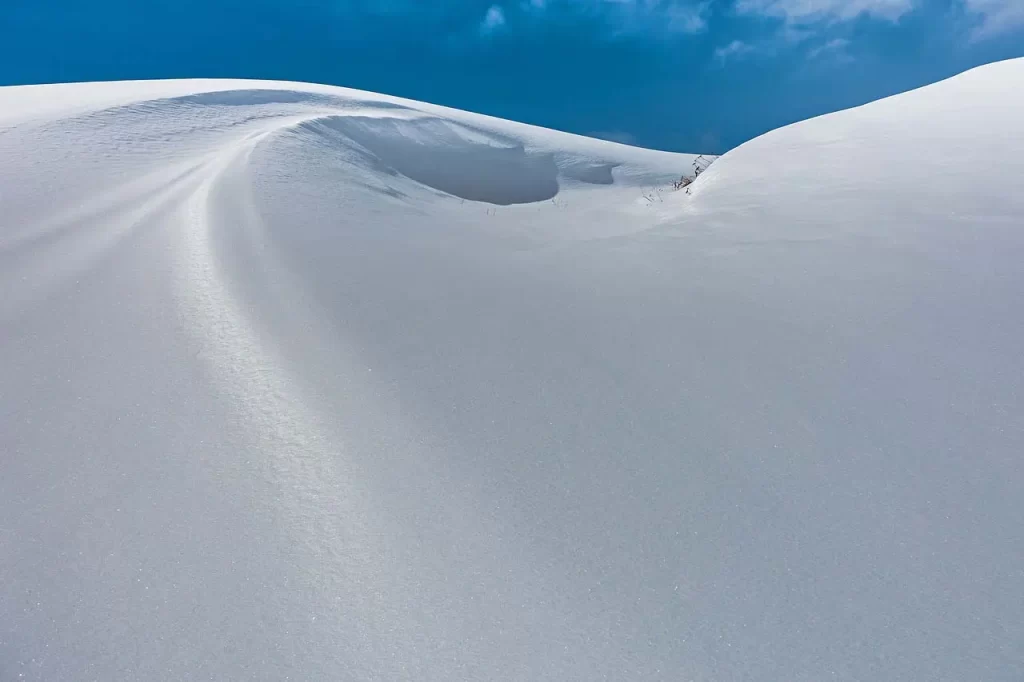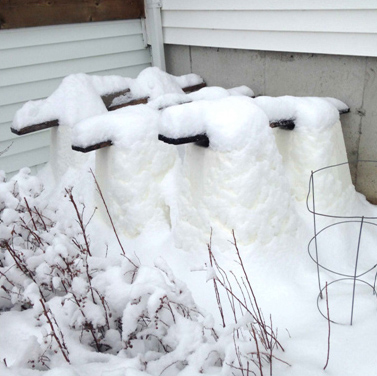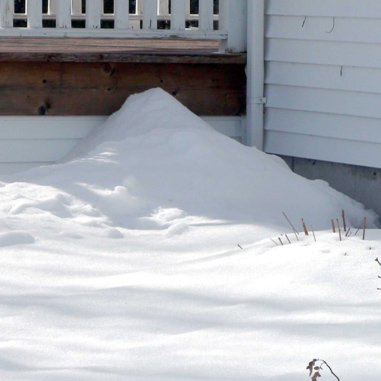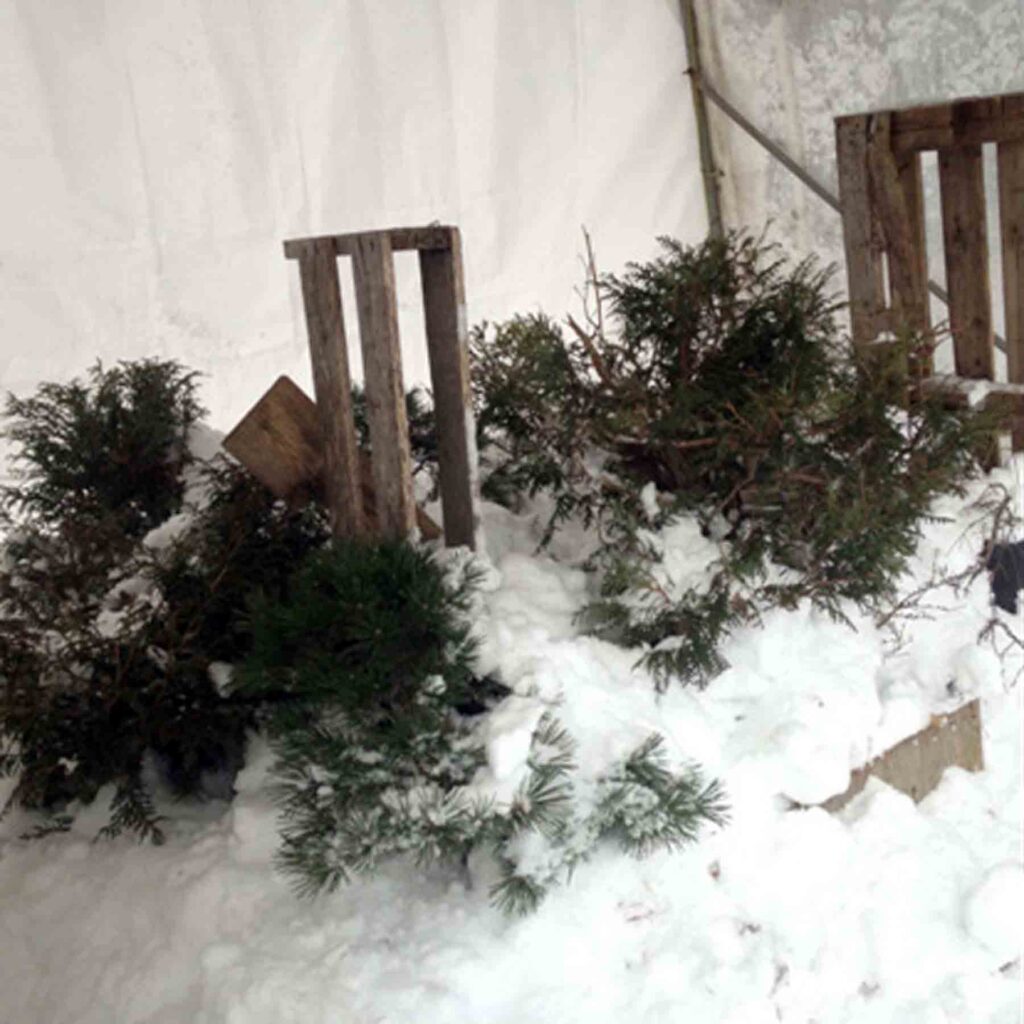
Why use snow to protect your bonsai?
Claude Savard
CSCeramique
The period of hibernation under the snow for our bonsai can be stressful, for professionals and beginners alike. On the strength of my experience with various methods to protect my native bonsai, I'd like to share in this article an approach that has fully met my expectations. By doing so, you'll be able to tackle this crucial step with confidence and self-assurance.
Using snow as thermal insulation
As mentioned in the article entitled « How do I keep my native bonsai in winter? », In my last article, I outlined three methods for preserving these trees in our often harsh climate. On several occasions, I have emphasized the use of snow as a thermal insulator to protect my bonsai trees.
The science behind snow insulation
I base myself on the scientific knowledge shared by an article in "Québec Science" on the role of snow as a natural insulator.
It's the air in the snow that insulates us from the outside world. It acts as a buffer between the cold ambient air and what lies beneath the snow. For example, snow walls keep the temperature close to 0°C inside an igloo, whereas it's -20°C outside.
Read the full article here
Personal experiences :
proof through data
I'm constantly using snow to protect my trees, both inside and outside the protection. It may sound simple to say, but is it really effective? To answer this question, I conducted a test over two winters, evaluating the impact of snow on two distinct types of protection. Here's the methodology I followed.
First of all, I had installed an electronic thermometer probe that communicated via Wifi with its base station, providing me with continuous temperature readings while I was snug and warm in my office.
Then, early in the morning, I collected the information and entered it into a spreadsheet. I would record the date, the temperature inside my protection and the temperature provided by the local weather station.
This led to the creation of this graphic, and I was pleased to see that my snow-covered shelters provided amazing protection.
Experiment carried out during winter 2018-2019
The first experiment, carried out during the winter of 2018-19, was with polystyrene cones. My trees were already in place, waiting to be covered by their protections. Preferring to install the latter as late as possible to avoid the trees suffering from excessive heat, I began my experiment on November 10, 2018.
On this graph, the two lines have exactly the same starting point, i.e. a temperature of -4 degrees Celsius. The red line represents the temperature inside the protection, while the blue line indicates the temperature outside my region.

From the start, the temperature inside the protection rises, while outside it falls. At this time of year, snow is not yet abundant, but it already has a protective effect. In mid-December, the temperature inside the cones remains stable at 0 degrees Celsius. However, a few days of outside temperature rises (1), reaching up to 2 degrees Celsius, cause an increase followed by a rapid decrease, due to the melting of snow on the protections.
On December 26 and 27, I recorded the coldest temperatures of the season (1) inside the protections, at -5 degrees Celsius. To remedy this situation, I had to add snow to the protections in order to maintain more stable temperatures. Another point of note in this experiment was the observation of the outside temperature curve during the winter season, with significant variations
In February, although the maximum temperature (2) reached -28 degrees Celsius, the curve remained remarkable stable between February 14 and March 14 (3) inside the protections. During this period, the temperature remained constant at 0 degrees Celsius, due to the accumulation of snow on my protections. Despite the extreme conditions, thermal stability persisted, testifying to the effectiveness of the measures taken.
Thereafter, a gradual rise in temperature became noticeable around mid-March, finally reaching excessively high temperatures in April. Avoiding premature bud break, I put an end to their hibernation.
Experiment carried out during winter 2020-2021
In order to confirm the effectiveness of snow as a protection against the cold, I undertook a second experience during the following winter, with a totally different configuration to that of the previous winter. Unlike the first experiment, where the snow was on the outside of the protections, this time it will still act as insulation, but will be inside the protection.
For this second experience, carried out under a carport, I gathered all my trees together at the start, preparing them for their passage through the winter season in this shelter. Ready to begin this new experience, I waited until enough snow had accumulated to cover the trees inside the shelter, delaying the start compared with the previous season.
Start-up took place later than last time, on December 7, 2020, once the required amount of snow had been reached. During this season, an interesting observation concerns the stability inside the shelter in relation to temperature variations outside. At the end of December (1), the outside temperature reached up to 10 degrees Celsius, while the temperature inside the shelter rose by just one degree Celsius.

Later, towards the end of January and throughout February, the opposite phenomenon occurred, with several temperature drops of up to -30 degrees Celsius (2). The temperature curve inside practically follows that outside, but the variations are less dramatic and more stable.
Conclusion: Snow, an essential ally
Ai-je bien répondu à votre question « Pourquoi utiliser la neige pour protéger vos bonsaïs? » j’espère que « oui ». Les résultats ont confirmé que la neige se révélait être le meilleur isolant, préservant efficacement nos bonsaïs, que ce soit à l’intérieur ou à l’extérieur des protections. Facile à mettre en œuvre et totalement gratuite, cette méthode fiable a constamment assuré le succès de la préservation de mes arbres indigènes par le passé.
My next challenge is to deal with the small rodents that spend the winter at my expense, but that's another story altogether...
P.S.
For an in-depth explanation of how these protections were achieved, see the details provided in the article entitled « How do I keep my native bonsai in winter? »


